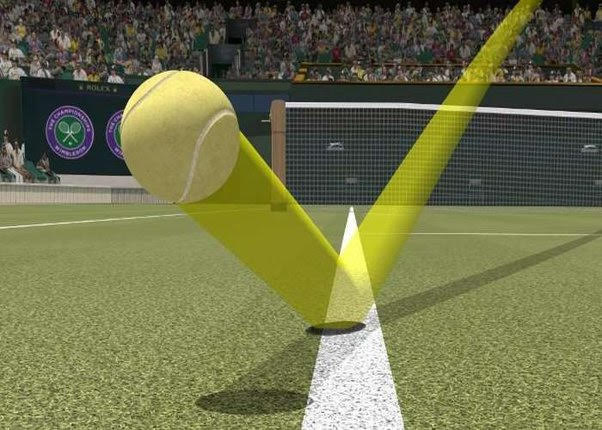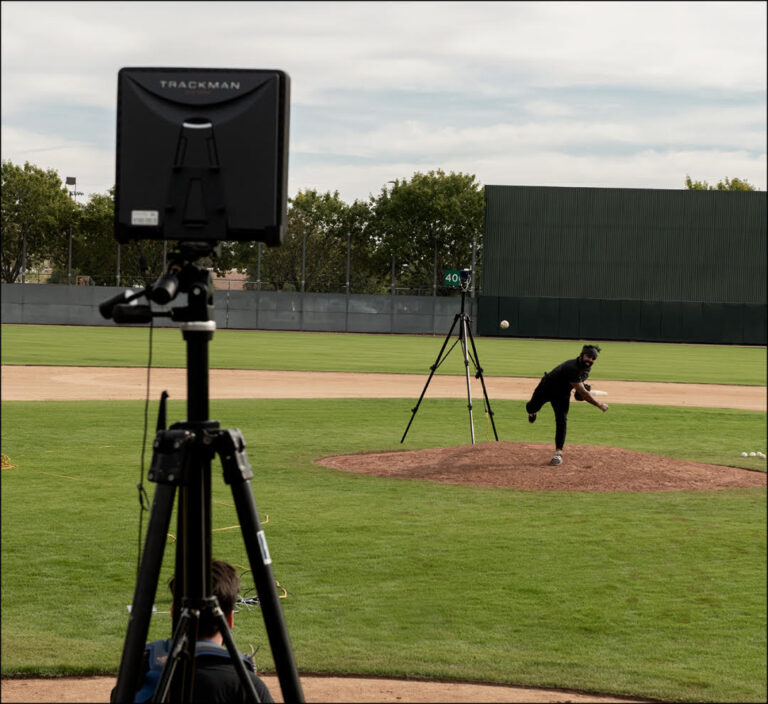The game scene at the 2020 Western and Southern Open is quite different from that of other competitions. It feels a bit empty. Yes, there are no line judges. That day’s game was a line decision by the AI referee on behalf of human goodness. As such, it is not just in the manufacturing industry that the main technology of the Fourth Industrial Revolution replaces humans. Sports referee jobs are also under threat. According to a survey, 90 percent of referees will be replaced by robots by 2026. Is that really going to happen?

Hawkeye is a computer vision system used to determine sports lines. Ten cameras throughout the stadium analyze images taken at 340 frames per second to determine the drop point of the ball. In the early 2000s, this technology, which was used as an auxiliary screen for broadcasting tennis matches, was introduced to actual games the following year with the quarterfinals of the US Open in 2004. Serena Williams, who played in the match, suffered five misjudgments and eventually lost. Fans, outraged that the Hawkeye review on TV and the judge decisions were so different, urged its introduction to actual games. Since 2017, the reading time, which took about 10 seconds, has been drastically reduced, that is, Hawkeye Live, which can be judged in real-time, is being tested in practice to replace good faith.
In baseball, similar techniques appeared around the same time. The 2019 US Independent League introduced the Trackman system. It uses missile tracking technology to determine the trajectory of the ball and determine whether the ball has entered or left the virtual strike zone. And the result is delivered to the referee and the referee shouts at the trackman’s decision. The AI referee not only captures the trajectory of the ball but also analyzes the player’s movements and scores them. The International Gymnastics Federation introduced the AI judging system at the 2019 World Championships. The 3D laser sensor shoots a laser 2.3 million times a second to record the player’s movements and then compares them with database data to score technical points. AI referees lightly surpassed human fuselage vision and spatial perception by capturing the joint angle of a gymnast in the air, judging in and out of a serve exceeding 180km, and measuring the three-dimensional position of the ball.

There seems to be no reason not to introduce an AI referee in actual games. However, there is also public opinion against this. The first argument of the AI referee’s opponent is that misjudgment is part of the game. LA Dodgers manager Dave Roberts has expressed opposition to the introduction of AI referees, saying that such a human element is a characteristic of baseball, even if there is misjudgment. It is a little romantic argument that incompleteness is the core of humanity, and the unpredictability resulting from it is a characteristic of sports. However, the damage of such unpredictability is being passed on to the players. Perhaps that’s why active players welcome it, saying there is no reason not to introduce it if AI referees make more accurate decisions than humans.
In addition, in 2018, Major League Baseball referees made 24,294 ball judgment errors. I think the misjudgment is too big a part of the game. The opposition’s second argument is that the fun is lost due to AI refereeing. Major League umpire Emmett Ashford said the AI umpire would not be able to grasp the atmosphere of the stadium when the home team was losing by seven points, so he could not follow the umpire’s efforts to lead the game to fun. It is easy to see referees making decisions in favor of the home team not only in baseball but also in other sports. The referee’s intentional decision brings victory to the player supported by the home fans regardless of their skills.
Not only does the value of victory decrease, but it also leaves an indelible scar on the losing team. Of course, it is clear that the fun is halved due to the VAR challenge and ball judgment delay, but if the technology improves and the decision time is shortened, it seems to be a problem to be solved if the real-time judgment is possible like Hawkeye Live. Opponents also question the accuracy of AI referees. Hawkeye technology only has a margin of error of 3.6mm, and the Trackman system recognizes the batter’s body size and stance, creating a customized strike zone each time, and the gymnastics AI judgment system scans the athletes’ bodies before the race to improve their accuracy. Of course, there are delays in judgment due to battery problems, machine errors, and sometimes suspicious judgments, but I doubt it would make 24,294 misjudgments in a season.
The introduction of robot referees is accelerating. However, there is an unknown area of judgment that AI referees have not yet entered. It’s a physical foul. The players have to call fouls while they are bumping into each other, pushing and pulling. It seems difficult for AI referees to replace human referees because it is an area that requires subjective judgment that goes further from what is seen and identifies the player’s intention. In addition to contact sports, it is not easy to imagine AI referees replacing human referees in art-scoring events such as figure skating and gymnastics, and speculative events such as boxing and judo. Right now, of course. As the technology to read facial expressions and analyze emotions is getting more sophisticated, the information recorded by sensors planted in athletes’ equipment is getting colorful, and the game/judgment patterns identified by AI technology are gradually increasing, so I think AI referees will be found in all sports within 10 years.
So, will human referees disappear in 10 years? In my case, even if it does not make an important decision in the game, I think it will mediate conflicts between players, intervene physically in the game, and still appear on the field.
By. Matthew Park


